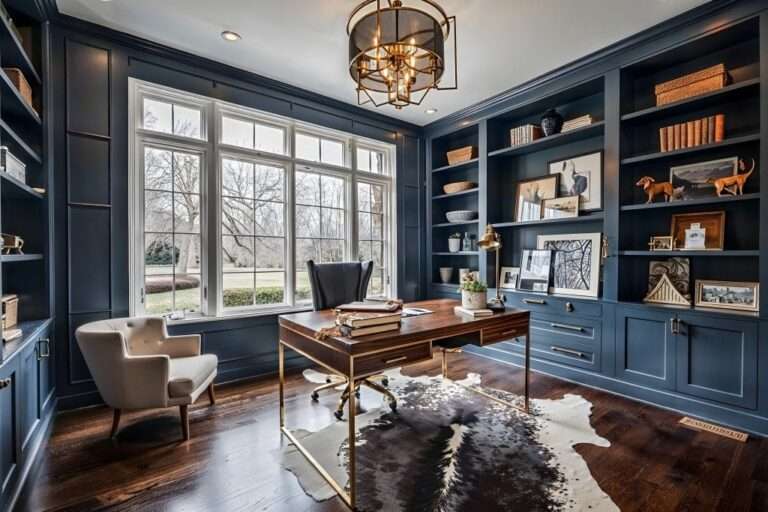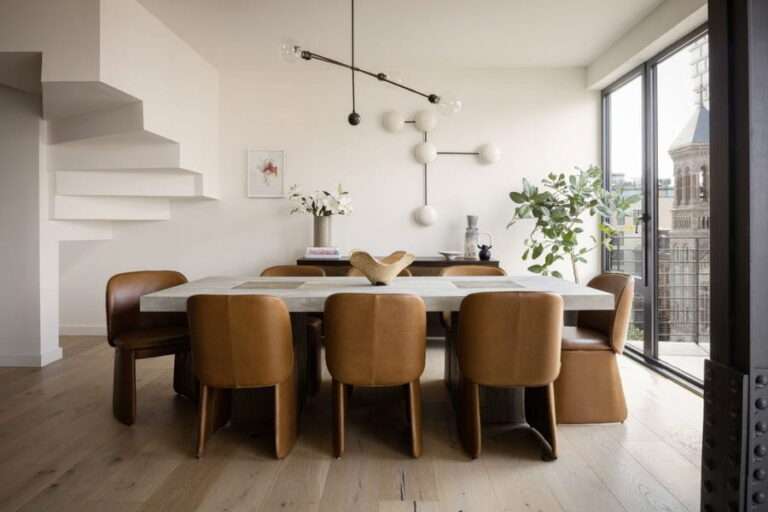Ever walked into a room and just loved how it felt, but you could not quite explain why? That cozy, stylish vibe usually comes down to one thing: texture. Whether incorporated as soft fabrics, bold patterns, or natural materials, texture in interior design is the secret element that makes your home feel complete.
Types of Texture in Interior Design
So, what exactly is texture? Texture in interior design is all about how things feel or appear to feel. There are two main types of texture: tactile and visual. Understanding the difference between the two is key to creating a balanced, stunning interior design that works together harmoniously.
Pro Tip: Need more direction in applying texture to the interior design of your home? Try our Free Interior Design Style Quiz to discover your ideal style today!
Tactile Texture: The Feel Factor
Tactile texture involves surfaces you can physically touch and experience. This type of texture brings warmth, comfort, and sensory appeal to your space. Think soft velvet sofas, a rough exposed stone wall, or a cozy knitted throw. Tactile textures are all about creating a personal connection with expressive interior design elements.
Visual Texture: The Look of Your Space
Visual texture, on the other hand, is all about what your eyes perceive. This might include things like patterns, intricate paint finishes, or the illusion of texture created through materials like wallpaper or fabrics. Visual texture adds depth, dimension, and interest to your room. It helps the eye wander, making a room feel more layered and visually appealing.
How to Use Texture in Interior Design
Adding interior texture does not have to mean redoing your whole space. A few smart updates can totally change the feel of your decor, may those be bold wall textures or neutral-toned fabrics. So let’s explore how you can use texture in interior design to enhance the look and feel of your home.
1. Mix It Up: Layering Textures for a Richer Look
One of the most effective ways to add texture to a room is by layering different types. Combine a soft velvet sofa with fur throw pillows, or pair a smooth glossy coffee table with a patterned woollen rug to create a sense of complexity in your room. Mixing smooth textures with rough ones can make your space feel more lively and visually appealing.
2. Cozy Comfort: Soft Fabrics for a Warm, Inviting Atmosphere
Fabrics are a quick and easy way to bring texture into your home. Think plush velvet pillows, soft cotton duvets, chunky knit wool throws, or linen curtains. You can add a faux fur accessory or a soft woolen carpet for a chic look. Different fabric choices can make your room feel soft and cozy. Stick to a color palette, but mix up the materials for a cohesive look.
3. Walls and Ceilings: Beyond the Basics
Walls and ceilings are often overlooked when it comes to adding texture, but they can be game-changers. Adding textured wallpaper, patterned tiles, lime wash paint finishes, wood panels, or exposed brick to your walls brings both visual and tactile texture into the room. For ceilings, consider adding wood beams, tongue-and-groove planks, or even a stylish textured paint finish. These elements help give the room depth, making the space feel more finished and complete.
4. Go Natural: Adding Earthy, Organic Interior Texture
Natural materials like wood, stone, and metal are perfect for creating earthy textures that feel grounded and calm. Employ wooden dining table, stone accessories, rattan light fixtures, or metal vases to bring tactile elements into your space. Additionally, natural textures have a timeless quality that fits seamlessly into any design style, whether rustic, modern, or minimalist.
5. The Art of Contrast: Mix Glossy and Matte Finishes
One of the best ways to add intrigue and visual appeal to your spaces is by mixing matte and glossy finishes. Think matte wood cabinets against a glossy marble backsplash or a velvet chair next to a glass table. The different finishes catch the light in different ways, making your room feel more layered. Stick to two or three finishes per room to keep your design clean.
6. Light and Shadow: Play with Illumination
Texture is not just about what you can touch or see. It is also about how light interacts with the surfaces in a room. Textured materials like rugs, fabrics, and wood create beautiful shadows and highlight depth in your space. Experiment with different lighting angles to bring out the best in your textures. Accent lights, for instance, can bring out the richness of a textured wall, while soft lighting can soften the effect of a rough surface.
7. Bring the Outdoors in: Add Plants to Your Home
Plants are a great way to introduce natural interior texture into your space. Not only do plants add greenery and life to a room, but they also provide a refreshing contrast to other textures. The soft, delicate leaves juxtapose beautifully with hard textures like stone or wood. Whether you go for hanging plants, potted plants, or small succulents, they will surely bring a touch of freshness to any room.
8. Small Details Matter: Texture in Accessories
Sometimes, it is the small accents that make a big difference. Adding textured accessories like artwork, books, ceramic vases, woven baskets, or fabric lampshades can introduce texture without overwhelming the room. These little details can help you create spaces that feel warm, interesting, and uniquely you. Plus, accessories give you a low-commitment way to play with interior texture and switch things up with the seasons.
Ready to Incorporate Interior Texture into Your Spaces?
Consider hiring an expert interior designer who can help you layer different textures thoughtfully and in a way that reflects your style. Schedule your Free Online Interior Design Consultation today to create a welcoming space that you will love living in!






